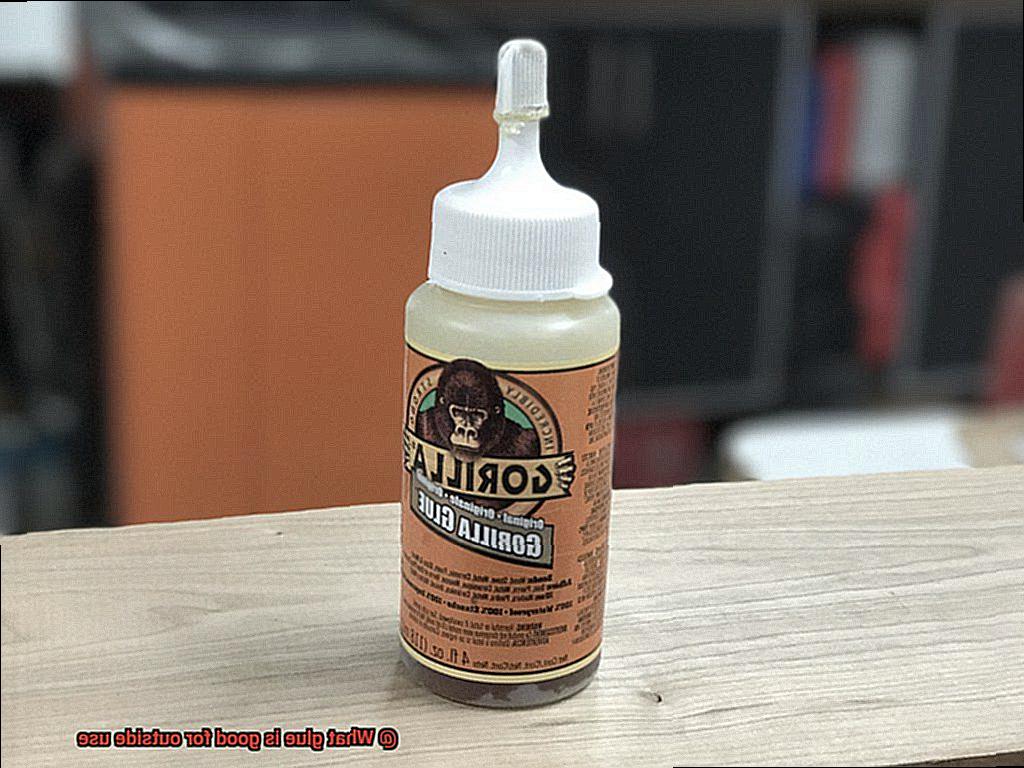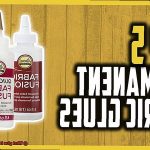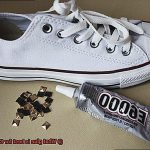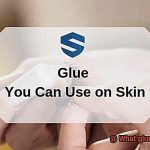When it comes to outdoor projects, choosing the right glue is crucial. Whether you’re fixing a broken garden ornament, building an outdoor structure, or repairing a weathered patio chair, finding a glue that can withstand the elements is essential for long-lasting results. With so many options available, it can be overwhelming to determine which adhesive will hold up against moisture and temperature changes.
In this blog post, we’ll explore the top glues for outdoor use and share valuable insights and tips to help you make an informed decision. From waterproof qualities to UV resistance, we’ll delve into the features that define an exceptional outdoor adhesive. Get ready to discover the perfect glue that will give you confidence in conquering your next outdoor project.
What is Glue?
Contents
- 1 What is Glue?
- 2 Factors to Consider When Choosing Outdoor Glue
- 3 Types of Glues Suitable for Outdoor Use
- 3.1 Epoxy Adhesive: A Superhero for Outdoor Projects
- 3.2 Polyurethane Adhesive: The Go-To Glue for Woodworking Projects
- 3.3 Silicone Adhesive: Sealing and Bonding Outdoor Marvels
- 3.4 Outdoor Construction Adhesives: Built to Withstand Mother Nature
- 3.5 Marine Adhesive: Conquering Wet Environments
- 3.6 UV-Resistant Adhesives: Sun-Fighting Warriors
- 4 Epoxy Adhesives
- 5 Polyurethane Adhesives
- 6 Cyanoacrylate (Super Glue) with UV Stabilizers
- 7 Proper Surface Preparation for Optimal Results
- 8 Following Manufacturer’s Instructions
- 9 Conclusion
Glue is a remarkable adhesive substance that plays a crucial role in various industries and everyday life. Whether you’re repairing broken items or embarking on a creative project, understanding glue’s composition and properties is key to achieving strong, long-lasting bonds. In this article, we will delve into the science behind glue, explore its different types, and provide insights on choosing the right adhesive for your needs.
Understanding Glue Composition:
At its core, glue is composed of a mixture of chemicals that create its adhesive properties. The main ingredient in most glues is a polymer compound. These large molecules, made up of repeating subunits, allow glues to form strong bonds with different materials. Glues also contain additives such as solvents, thickeners, curing agents, and stabilizers. Solvents dissolve the polymers, making the glue easier to apply. Thickeners increase viscosity for better application control. Curing agents promote hardening or setting, while stabilizers prevent degradation over time.
Types of Glue:
- PVA (Polyvinyl Acetate) Glue: PVA glue is a versatile water-based adhesive suitable for everyday use. It forms strong bonds on porous surfaces like wood, paper, and fabric. However, it is not recommended for outdoor use as it can degrade when exposed to moisture.
- Epoxy Adhesives: Epoxy adhesives are renowned for their exceptional durability and versatility. They form strong bonds on various surfaces including metal, wood, ceramic, and concrete. Highly resistant to water and temperature fluctuations, epoxy adhesives are ideal for outdoor projects.
- Cyanoacrylate (Super Glue): Super glue is a fast-acting adhesive that bonds quickly and strongly with a wide range of materials including plastic, metal, ceramic, and rubber. While it is not recommended for outdoor use due to its low resistance to moisture and temperature changes, it is perfect for indoor applications.
- Polyurethane Adhesives: Polyurethane adhesives offer flexibility and can bond different materials together, such as plastics, metals, and wood. They exhibit excellent resistance to moisture, heat, and UV radiation, making them suitable for outdoor applications.
Choosing the Right Glue:
When selecting glue, consider the specific requirements of your project. For indoor projects, PVA glue or super glue may suffice. However, for outdoor projects, epoxy or polyurethane adhesives are more suitable due to their water resistance, temperature stability, and UV resistance properties.
Factors to Consider When Choosing Outdoor Glue
When it comes to choosing outdoor glue, there are several factors that should be taken into consideration. The first and most important factor is weather resistance. Outdoor glue needs to be able to withstand the harsh elements of nature, such as moisture, temperature changes, and UV rays. Look for glues that are specifically labeled as weatherproof or designed for outdoor use.
Another crucial factor is bond strength. Outdoor projects often involve heavy loads or constant movement, so you’ll need a glue that provides a strong and durable bond capable of withstanding these stresses without weakening or breaking. Look for glues that have high tensile strength and are known for their long-lasting adhesive properties.
Compatibility with materials is also key. Different glues work better with specific materials, so be sure to choose one that is suitable for the materials you’re working with. Whether it’s wood, plastic, metal, or something else entirely, there’s a glue out there designed to bond it securely. Make sure to read the product labels and choose a glue that is recommended for your specific project.
Consider the application method as well. Glues come in various forms, from squeeze bottles to tubes or cans with applicator brushes. Choose an application method that is convenient and suited to the size and complexity of your project. Some glues also require additional tools or equipment for proper application, so keep that in mind when making your selection.
Drying time matters, especially if you’re on a tight schedule. Some glues dry faster than others, so opt for one that fits your timeline and allows you to move on with your project quickly. However, keep in mind that faster drying times may also mean less working time, so be prepared to work efficiently once the glue is applied.
Longevity is essential for outdoor projects meant to last. Look for glues with a proven track record of withstanding outdoor conditions and maintaining their bond strength over an extended period. Read reviews and seek recommendations from others who have used the glue for similar projects to ensure its durability.
Finally, consider the toxicity and environmental impact of the glue you choose. Selecting non-toxic, eco-friendly glues that do not release harmful fumes or chemicals into the environment is not only good for your health but also for the planet. Look for glues that are water-based or solvent-free and have low VOC (volatile organic compounds) levels.
Types of Glues Suitable for Outdoor Use
When it comes to outdoor projects, selecting the right glue is essential. You need a glue that can brave the elements, from rain and scorching heat to relentless UV rays. In this blog post, we will delve into the various types of glues suitable for outdoor use. Each type offers unique features, advantages, and disadvantages, ensuring that your outdoor adventures are built to last.
Epoxy Adhesive: A Superhero for Outdoor Projects
Epoxy adhesive possesses extraordinary strength and durability, making it perfect for repairing outdoor furniture or bonding materials like metal, wood, or concrete. Its resistance to water, UV rays, and temperature changes ensures that your DIY picnic table can stand strong against even the harshest weather conditions.
Polyurethane Adhesive: The Go-To Glue for Woodworking Projects
If you’re working on a woodworking project or need to bond outdoor structures like fences or decks, polyurethane adhesive is your ultimate ally. It forms a robust and flexible bond that can withstand extreme weather conditions. Snow or sweltering heat, your outdoor creations will remain intact.

Silicone Adhesive: Sealing and Bonding Outdoor Marvels
When it comes to sealing and bonding outdoor materials like glass, metal, plastic, or rubber, silicone adhesive is a reliable choice. It creates a flexible and durable bond capable of handling exposure to moisture, sunlight, and temperature fluctuations. Bid farewell to leaky gutters or loose outdoor decor.
Outdoor Construction Adhesives: Built to Withstand Mother Nature
For heavy-duty outdoor applications such as bonding concrete, brick, stone, or masonry, outdoor construction adhesives are the way to go. These adhesives are specially formulated to withstand weathering and extreme temperatures. Your outdoor structures will stand tall against Mother Nature’s toughest tests.
Marine Adhesive: Conquering Wet Environments
If you’re a boating enthusiast or tackling outdoor projects in wet environments, marine adhesive is your best friend. It’s designed to withstand constant exposure to water and saltwater conditions. Whether you’re repairing your boat or sealing joints in your outdoor structures, marine adhesive has got your back.
UV-Resistant Adhesives: Sun-Fighting Warriors
When your outdoor projects face constant exposure to direct sunlight and UV rays, UV-resistant adhesives are your secret weapon. These adhesives endure prolonged exposure without deteriorating or losing their bonding strength. Create dazzling outdoor mosaic art pieces or fix sun-faded garden ornaments with confidence.
Epoxy Adhesives
When it comes to outdoor projects, finding the perfect adhesive is essential. You need something that can withstand the elements and keep your creations intact for years to come. Look no further than epoxy adhesives – the superheroes of glues. These super-strong adhesives are known for their durability and versatility, making them the top choice for outdoor applications.
So, what makes epoxy adhesives so special for outdoor projects? Let’s dive into their advantages:
- Unmatched strength: Epoxy adhesives are renowned for their incredible bonding power. Whether you’re fixing a broken chair or constructing a majestic pergola, epoxy adhesives can handle it all. They create a bond that can withstand heavy loads and resist the strain of outdoor use.
- Defying the elements: Outdoor projects face brutal conditions like rain, sunlight, and temperature changes. But fear not – epoxy adhesives are resistant to moisture, UV radiation, and temperature fluctuations. Your outdoor creations will stay strong and intact, no matter what Mother Nature throws at them.
- Versatility defined: Epoxy adhesives can bond a wide range of materials commonly used in outdoor projects. Wood, metal, glass, ceramics, plastics – you name it, epoxy can bond it. This versatility makes them suitable for various applications, from fixing a wobbly outdoor chair to bonding an eye-catching outdoor sign.
- Weatherproof wonders: When selecting an epoxy adhesive for outdoor use, look for those specifically formulated for weather resistance. These specially designed adhesives have excellent resistance to water, sunlight, and extreme temperatures. Just check the packaging for labels like “weatherproof” or “outdoor.”
- Time on your side: Some outdoor projects require more time for mixing and application. Luckily, there are epoxy adhesives available with extended formulations that provide longer working times. Plus, these adhesives have cure times that allow you ample time to ensure a perfect bond. No rushing needed.
- Aesthetically pleasing: Epoxy adhesives come in different colors or can be tinted with pigments, allowing for better aesthetic integration with the materials being bonded. This is especially useful when the adhesive may be visible in the final application, ensuring a seamless and appealing finish.
Polyurethane Adhesives
Polyurethane adhesives are the ultimate go-to for all your outdoor projects. These versatile glues are built to withstand the harshest weather conditions and provide unbeatable durability. Let’s dive deep into the advantages and considerations of using polyurethane adhesives for your outdoor endeavors.
Advantages:
- Extreme temperature resistance: Say goodbye to glue that loses its strength in scorching summers or icy winters. Polyurethane adhesives can handle it all, maintaining their bond strength no matter the temperature. So whether you’re constructing a gazebo or repairing a fence, these adhesives won’t let you down, rain or shine.
- Waterproof properties: Polyurethane adhesives boast exceptional water and moisture resistance. No need to worry about your outdoor projects falling apart when exposed to rain or humidity. From bonding materials for signage to fixing a pool deck, these glues will keep everything intact, even in a downpour.
- Flexibility: Don’t let movement or vibrations compromise your project’s integrity. Polyurethane adhesives offer remarkable flexibility, allowing them to withstand any shifts without sacrificing bond strength. So if you’re working with materials that expand or contract due to temperature changes, rest assured that these glues will hold everything together.
Considerations:
- Curing time: Keep in mind that polyurethane adhesives often require longer curing periods compared to other glues. It’s crucial to follow the manufacturer’s instructions on curing time for optimal bond strength. Some adhesives might even need support during the curing process, like clamping or taping the bonded materials until the adhesive sets completely.
- Material compatibility: While polyurethane adhesives work well with many materials, it’s always wise to double-check their compatibility with what you’re bonding. Different substrates may require additional surface preparation or priming for the best adhesion. Don’t skip this step to ensure a strong and lasting bond.
Cyanoacrylate (Super Glue) with UV Stabilizers
The sun, a double-edged sword, provides us with warmth and light but can also wreak havoc on certain materials, including our beloved super glue. Fortunately, there is a solution to this problem – UV stabilizers.
These little additives play a crucial role in protecting cyanoacrylate (super glue) from the harmful effects of UV degradation. Let’s dive into the world of UV stabilizers and discover how they keep our glue strong and durable even under the scorching sun.
Shielding from Harmful UV Rays:
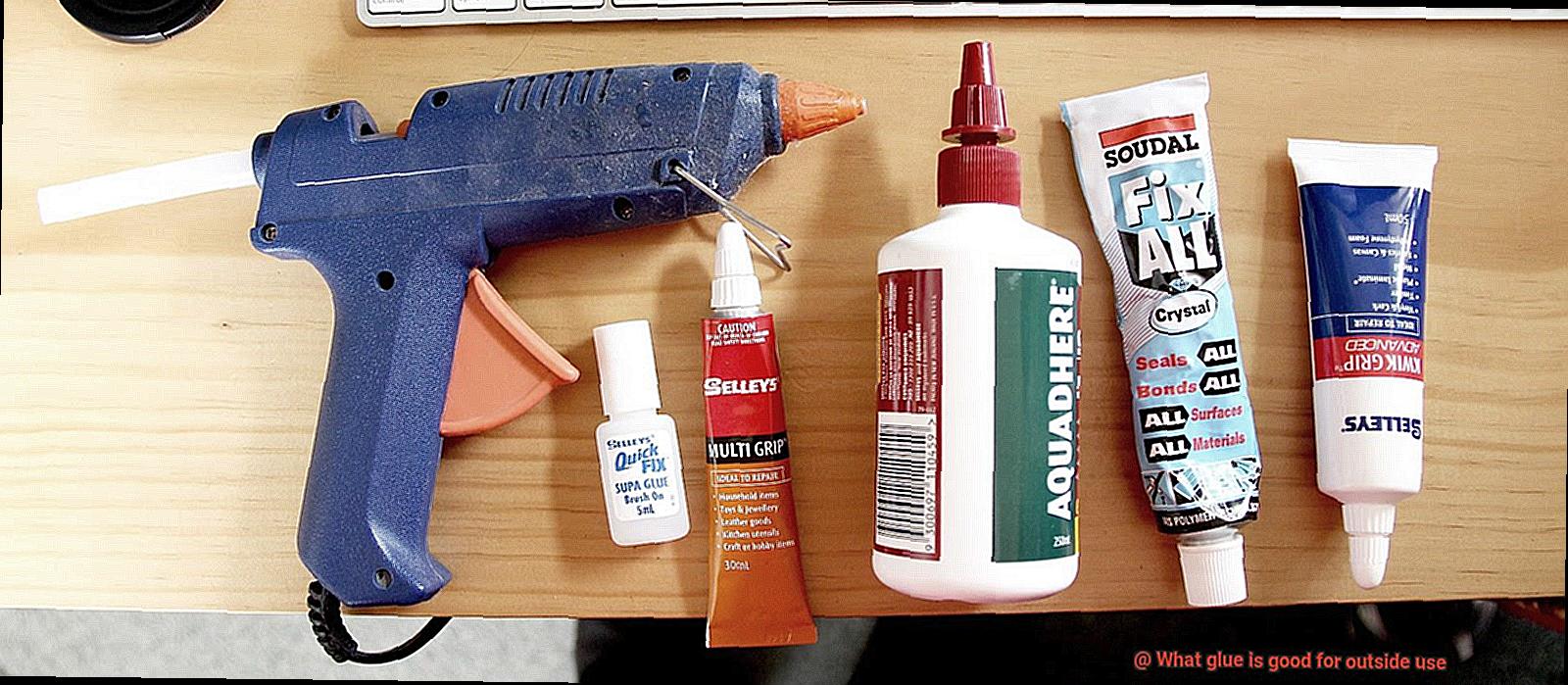
UV stabilizers act as superheroes for your super glue, absorbing or scattering harmful UV radiation to create a protective shield. They stand between your glue and the destructive power of sunlight, preventing the UV rays from reaching the adhesive itself and keeping it safe from damage.
Maintaining Strength and Integrity:
Super glue with UV stabilizers excels in maintaining its strength and integrity even when exposed to outdoor conditions. This makes it perfect for bonding materials constantly exposed to sunlight, such as outdoor furniture, automotive parts, or outdoor signage. With UV stabilizers on their side, these adhesives can withstand the test of time and weather.
Aesthetic Appeal:
UV stabilizers also come to the rescue when it comes to aesthetics. Nobody wants a yellowed or discolored adhesive ruining their project. Super glue with UV stabilizers provides excellent resistance to yellowing or discoloration over time.
Whether you’re working on a DIY art project or fixing outdoor decorations, rest assured that your adhesive will retain its clarity and transparency even after prolonged exposure to sunlight.
Choosing the Right Formula:
Not all super glue formulations include UV stabilizers. When selecting a glue for outdoor use, look for specific formulations that explicitly mention the inclusion of UV stabilizers. This ensures that your adhesive is optimized for outdoor applications and can withstand the harsh environmental conditions.
Proper Surface Preparation for Optimal Results
Achieving optimal results in outdoor glue applications requires proper surface preparation. Without it, the bonds can be weak and easily break or fail. In this article, we will explore the essential steps for effective surface preparation, ensuring that your glue adheres securely and withstands the elements.
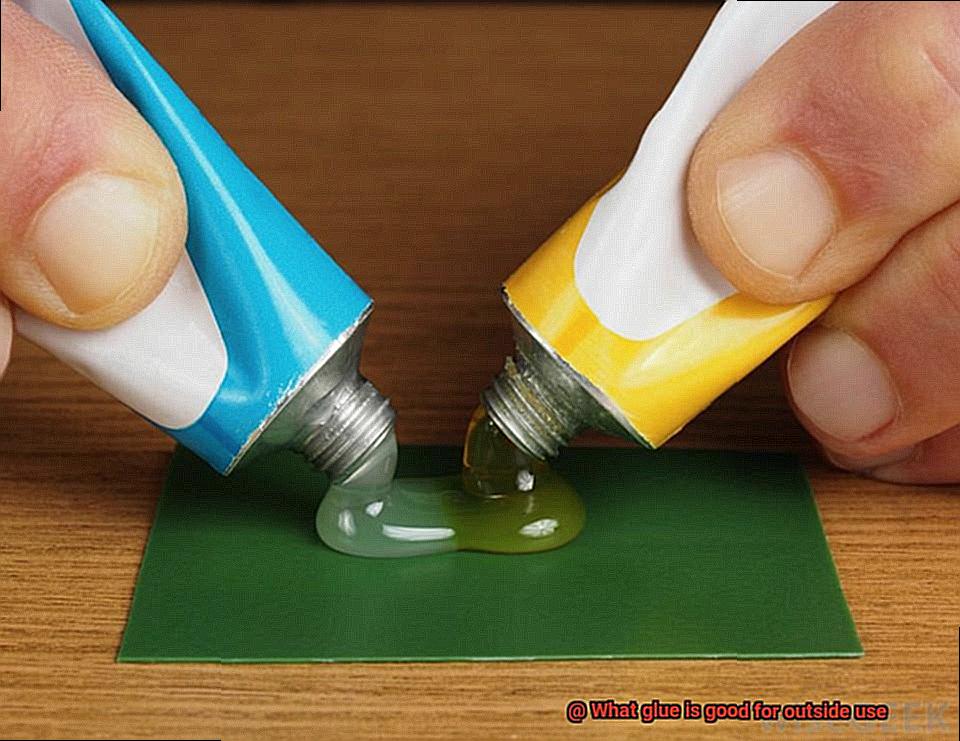
Step 1: Clean the Surface
Before applying any glue, ensure that the surface is clean and free from contaminants such as dirt, dust, or grease. Use a mild detergent or solvent to remove stubborn stains or residues. Starting with a clean surface provides a solid foundation for a strong bond.
Step 2: Remove Loose Materials
Eliminate any loose materials like peeling paint, flaking wood, or crumbling concrete before applying the glue. Use a scraper, sandpaper, or wire brush to create a smooth surface. This step ensures even and secure adhesion of the glue.
Step 3: Sand the Surface
To improve adhesion, lightly sand the surface. This roughens up the surface and provides more grip for the glue. Utilize fine-grit sandpaper and sand in a circular motion until the entire surface feels slightly rough. This step enhances the bond between the surface and the glue.
Step 4: Remove Rust and Oxidation
If you’re working with metal surfaces that have rust or oxidation, it’s crucial to remove them prior to gluing. Rust weakens adhesive strength and interferes with bonding. Use a wire brush or sandpaper to eliminate rust, ensuring that the metal is clean and smooth.
Step 5: Dry the Surface
Before applying glue, ensure that the surface is completely dry. Moisture compromises adhesive properties and effectiveness. Allow sufficient time for natural drying or use a clean cloth or paper towel to absorb excess moisture.
Step 6: Prime if Necessary
In some cases, especially with porous surfaces like wood or concrete, applying a primer before gluing may be necessary. The primer seals the surface and provides a better adhesive base. Follow the manufacturer’s instructions for the specific primer you’re using.
Following Manufacturer’s Instructions
Prepare to embark on an exciting journey into the world of outdoor glue projects. Whether you’re an avid DIY enthusiast or a seasoned craftsman, there is one secret ingredient that holds the key to your success – following the manufacturer’s instructions.
In this informative blog post, we will delve into the reasons why adhering to these instructions is crucial and how they can help you achieve outstanding results in your outdoor glue endeavors.
The Right Glue for the Right Job:
Just as each masterpiece requires a specific brushstroke, each outdoor project demands a particular type of glue. By heeding the manufacturer’s instructions, you can identify the perfect adhesive for your project, ensuring a bond that is not only strong but also resilient against the elements. Wood, metal, plastic – there’s a glue tailored for every material.
The Art of Proper Application:
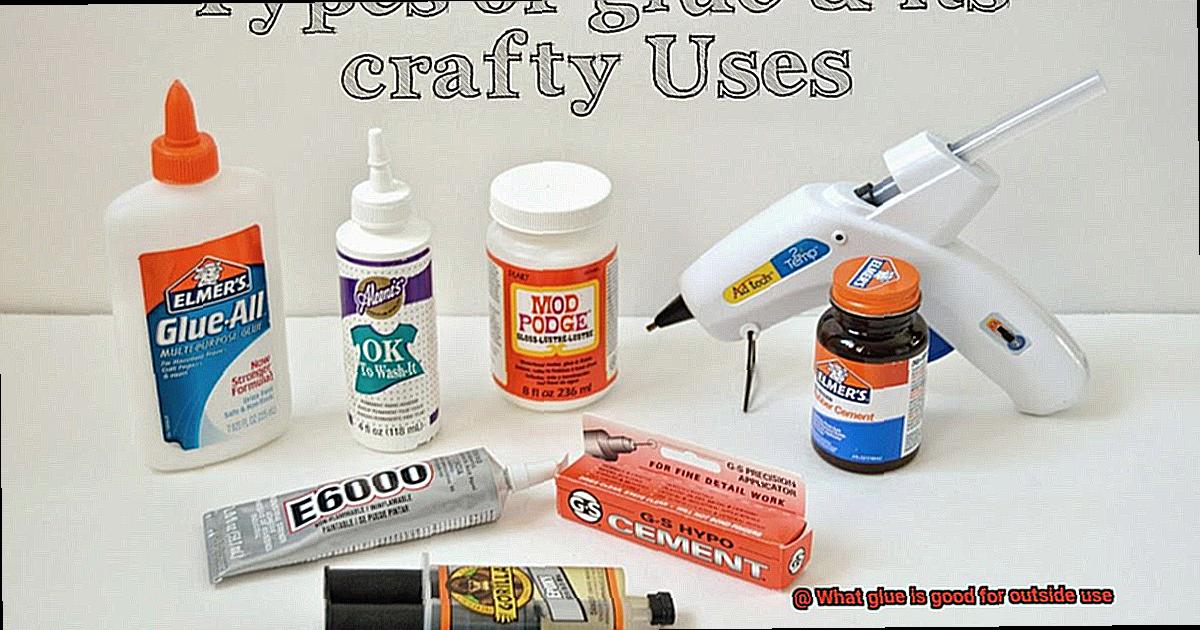
Have you ever wondered why some outdoor glue projects soar while others stumble? The answer lies in mastering the application techniques outlined in the manufacturer’s instructions.
These guidelines will enlighten you on how to apply the glue with finesse, utilizing recommended methods such as brushes, rollers, or spreaders. Moreover, you’ll discover the ideal drying time and curing process, empowering you to achieve a bond of unparalleled strength.
Weatherproof Warriors:
Mother Nature can be a formidable opponent, but fear not. The manufacturer’s instructions hold the key to understanding each glue’s resistance to different weather conditions. Some glues brave extreme temperatures with ease, while others stand tall against relentless rain or harsh UV exposure. By selecting a glue that aligns with your outdoor environment and diligently following the instructions, your project will emerge victorious against Mother Nature’s unpredictable whims.
Prepping for Perfection:
As the saying goes, “Preparation is key.” This holds true for outdoor glue projects as well. The manufacturer’s instructions will guide you through crucial surface preparation steps, including cleaning, removing coatings or contaminants, and ensuring a smooth, dry canvas. By diligently following these preparatory measures, you create an optimal foundation for adhesion. Skipping this phase may result in lackluster bonds or, worse yet, project failure.
Securing Success – Warranty Protection:
Many glue manufacturers offer warranties on their products, but there’s a catch – following their instructions is a prerequisite. By meticulously adhering to the provided guidelines, you not only ensure a successful bond but also maintain any associated warranties. It’s a win-win situation that safeguards both your project and your investment.
Conclusion
When it comes to finding the right glue for outdoor projects, you need something that can withstand the elements and provide a long-lasting bond.
Look no further than epoxy resin adhesive. This powerful adhesive is specifically designed for outdoor use, making it perfect for tasks like repairing outdoor furniture, securing outdoor decorations, or even fixing cracks in your patio.
With its strong bonding properties and resistance to moisture, UV rays, and temperature fluctuations, epoxy resin adhesive ensures that your projects stay intact no matter what Mother Nature throws at them.

